Discover the Majestic Beauty of Dinghu Mountain: A Nature Lover’s Paradise

An Essential Guide to Visiting Dinghu Mountain
Nestled in the heart of Zhaoqing, Dinghu Mountain beckons travelers with its enchanting blend of natural beauty and cultural heritage. As one of Guangdong’s most celebrated scenic spots, this majestic mountain range offers lush landscapes, cascading waterfalls, and historic temples, making it a perfect getaway for nature enthusiasts and spiritual seekers alike.
Visitors are treated to a tapestry of experiences, from serene boat rides across sparkling lakes to invigorating hikes through dense forests teeming with biodiversity. Whether you choose to tackle the steep trails on foot or opt for the convenient electric buggies that whisk you to key viewpoints, Dinghu Mountain promises an adventure tailored to your pace.
While the mountain is renowned for its breathtaking views and tranquil atmosphere, it’s also a sanctuary for local wildlife and a place of deep cultural significance, featuring ancient temples that invite reflection and reverence. With an array of attractions and activities to enjoy, Dinghu Mountain serves as a reminder of nature’s grandeur and the rich history that surrounds it. Prepare to immerse yourself in a world where every step unveils a new wonder, making it an essential stop on your journey through China.
In This Guide
- An Essential Guide to Visiting Dinghu Mountain
- The Rich History and Legends of Dinghu Mountain
- Main Highlights: What You Absolutely Can’t Miss
- Planning Your Visit: A Practical Guide
- Tickets: Prices, Booking, and Tips
- How to Get There: A Complete Transportation Guide
- Local Cuisine and Accommodation Nearby
- Frequently Asked Questions
- Final Thoughts on Your Trip
The Rich History and Legends of Dinghu Mountain
Dinghu Mountain is not only a stunning natural wonder but also a site steeped in rich history and legends that capture the imagination of its visitors. Nestled in Zhaoqing, Guangdong Province, this majestic mountain range has been a source of inspiration for poets, philosophers, and artists throughout the ages.
The history of Dinghu Mountain dates back to ancient times, with references found in classic Chinese literature. It has long been regarded as a sacred place, deeply intertwined with Daoism. The mountain is home to several temples, including the Qingyun Temple, which was built during the Tang Dynasty (618–907 AD). This temple not only serves as a place of worship but also as a cultural hub where many significant historical events took place. Pilgrims and scholars have traveled to Dinghu Mountain for centuries, drawn by its serene beauty and spiritual significance.
One of the most captivating legends associated with Dinghu Mountain is that of the “Eight Immortals Crossing the Sea.” According to folklore, these mythical figures, who are revered in Chinese culture, once traversed the waters surrounding the mountain. Their journey symbolizes overcoming adversity and achieving enlightenment, concepts that resonate deeply with visitors seeking personal growth and reflection.
The mountain is also famous for its biodiversity and breathtaking natural landscapes, which include lush forests, cascading waterfalls, and serene lakes. The ecological richness of Dinghu Mountain has earned it a place in the UNESCO Global Geoparks Network, further highlighting its importance not just as a recreational destination but as a vital ecological site.
As you explore Dinghu Mountain, you’ll encounter various monuments and sculptures that pay homage to its historical and cultural legacy. From ancient inscriptions to modern art installations, each element tells a story of the mountain’s enduring allure and the countless souls it has inspired over the centuries.
Visitors today can experience a blend of history, spirituality, and natural beauty, making Dinghu Mountain a truly unique destination. Whether you are hiking its trails, visiting its temples, or simply soaking in the tranquil atmosphere, you are walking in the footsteps of those who have sought solace and inspiration in this remarkable place.
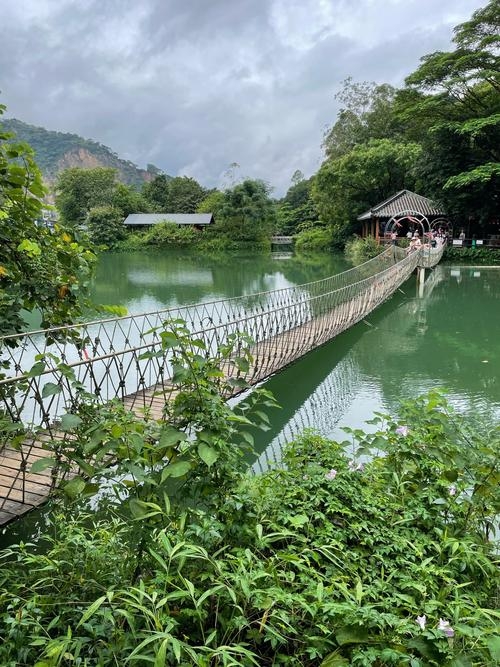
Dinghu Mountain.
Main Highlights: What You Absolutely Can’t Miss
Dinghu Mountain, nestled in the picturesque Zhaoqing region of China, offers a delightful blend of natural beauty, cultural heritage, and outdoor adventure. Here’s a curated list of the must-see highlights that will ensure your visit is nothing short of unforgettable:
1. Buddha Temple
One of the most significant cultural sites in Dinghu Mountain is the Buddha Temple. This sprawling complex features thousands of steps leading up to its serene grounds. As you ascend, take a moment to appreciate the intricate architecture and the spiritual ambiance that envelops the area. It’s not just a place for prayer but also a perfect spot for peaceful reflection amidst nature.
2. Butterfly Valley
A visit to Dinghu Mountain would be incomplete without exploring Butterfly Valley. Here, you can embark on a scenic boat ride (a short 100-yard journey) that takes you to a charming island dedicated to butterfly conservation. Once there, enjoy a leisurely hike through lush forests, where you’ll encounter stunning waterfalls and vibrant flora. While the grand waterfall may be less impressive during the dry season, the smaller cascades still offer a delightful sight.
3. Electric Buggies for Convenience
For those who prefer a more leisurely exploration of the mountain’s sites, electric buggies are available for a nominal fee. These hop-on/hop-off services make it easy to navigate between key attractions without the strenuous uphill trek, ensuring you have more energy to enjoy the stunning scenery.
4. Tripod Park
Take a moment to relax at Tripod Park, a quaint area featuring a giant cooking pot and picturesque views of Butterfly Island and the surrounding lake. It’s a great spot for a quick photo op and to soak in the tranquil atmosphere of Dinghu Mountain.
5. Dinghu Lake
Don’t miss the chance to unwind by Dinghu Lake. This serene body of water is perfect for a peaceful stroll or a moment of quiet contemplation. The area is well-maintained and offers beautiful views, making it an ideal place to take a break from your adventure.
6. Hiking Trails
For outdoor enthusiasts, Dinghu Mountain boasts numerous hiking trails that vary in difficulty. The paths can be steep and uneven at times, but they reward you with breathtaking views of the surrounding landscape. Just remember to wear suitable footwear, as some sections may be slippery, especially after rainfall.
7. Accessibility and Transport
Dinghu Mountain is easily accessible from Zhaoqing city center, with public transport options available. The journey takes about one hour, making it a convenient day trip for travelers. The park is less crowded during the dry season, allowing for a more intimate experience with nature.
8. Plan Your Visit
To fully appreciate Dinghu Mountain, consider allocating at least half a day for your visit. This will give you enough time to explore the highlights, meditate at the temple, and indulge in local snacks, like the delightful bean curd, ensuring a well-rounded experience.
Visiting Dinghu Mountain is more than just a day in nature; it’s an opportunity to connect with the serene beauty of China’s landscapes while immersing yourself in its rich culture. Whether you’re hiking up to ancient temples, enjoying the tranquility of lakes, or wandering through vibrant butterfly gardens, this destination promises a memorable adventure.
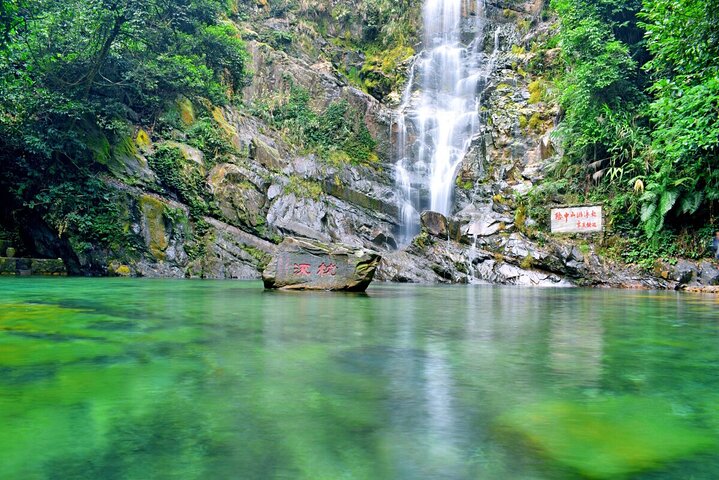
Dinghu Mountain.
Planning Your Visit: A Practical Guide
When planning your visit to Dinghu Mountain, it’s essential to know what to expect to make the most of your experience. Nestled in Zhaoqing, this breathtaking natural reserve offers a mix of scenic beauty, cultural exploration, and outdoor activities. Here’s your practical guide to navigating this stunning destination.
Getting There
Location: Dinghu Mountain is located in Kengkou Town, Dinghu District, Zhaoqing, Guangdong Province, China.
Transportation:
– By Public Transport: The site is easily accessible, taking about an hour by bus from Zhaoqing city center. Buses regularly run to the park, making it convenient for tourists.
– Private Transfers: If you prefer a more direct approach, consider hiring a taxi or booking a private tour from Guangzhou or Zhaoqing.
Entrance Fees and Hours
- Entrance Fee: There is an admission charge to enter Dinghu Mountain. Additionally, electric buggies are available for a fee of approximately RMB 20, which can help you get around the park’s expansive area.
- Operating Hours: The park is open daily from 8:00 AM to 7:30 PM, so plan your visit accordingly.
Best Time to Visit
The ideal time to visit Dinghu Mountain is during the dry season (October to March) when the weather is cooler and the trails are less slippery. Note that waterfalls may not be at their fullest during the dry season, so if you want to see them in their glory, consider visiting during the rainy months (April to September).
Key Attractions and Activities
-
Hiking and Nature Walks: Prepare for a variety of hiking trails that cater to different fitness levels. While some paths are well-maintained and relatively easy, others involve steep climbs and uneven terrain. It’s advisable to wear sturdy shoes and bring water.
-
Butterfly Valley: Don’t miss the scenic boat ride across to Butterfly Island, where you can witness a delightful array of butterflies. The hiking trails here lead to beautiful waterfalls, offering plenty of photo opportunities.
-
Temples and Cultural Sites: Take time to explore the various temples located throughout the park. Note that some areas, especially temples, have numerous steps, which can be a challenge for those not in good fitness.
Tips for a Successful Visit
-
Time Management: Allocate at least half a day for your visit. If you plan to explore the temples or enjoy a meal at one of the local restaurants, consider extending your stay to a full day.
-
Food and Amenities: While there are limited dining options within the park, you can find small eateries offering local snacks such as bean curd. Pack a picnic if you prefer to enjoy a meal amidst the stunning natural surroundings.
-
Safety Precautions: Be cautious on the trails, particularly in damp areas where the ground can be slippery. If you’re not an experienced hiker, consider utilizing the buggy service to conserve your energy.
-
Avoid Crowds: Visiting during off-peak seasons or on weekdays can provide a more serene experience, as the park tends to be less crowded.
Nearby Attractions
While you’re in the area, consider exploring nearby attractions such as Dinghu Lake or the Qingyun Temple for a more comprehensive experience of Zhaoqing’s natural and cultural offerings.
Conclusion
Dinghu Mountain offers a unique opportunity to immerse yourself in the beauty of nature while exploring significant cultural sites. With proper planning and an adventurous spirit, your visit will undoubtedly be memorable. Pack your essentials, lace up your hiking boots, and get ready to explore one of China’s hidden gems!
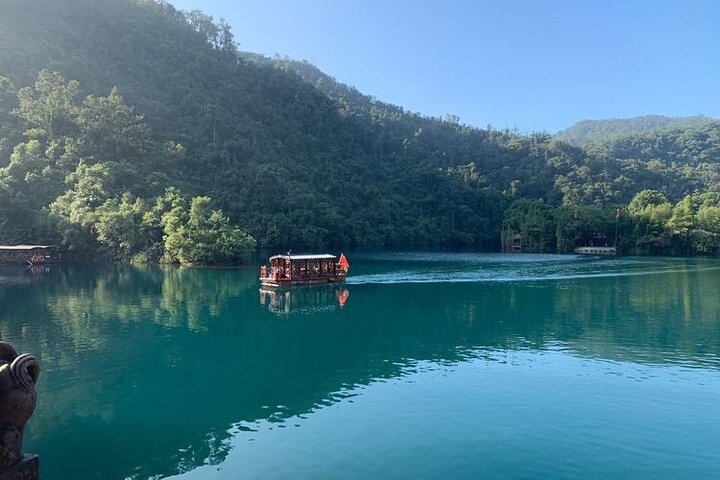
Dinghu Mountain.
Tickets: Prices, Booking, and Tips
When planning your visit to Dinghu Mountain, it’s essential to know the ticket prices, booking options, and some handy tips to make the most of your experience.
Ticket Prices
Admission to Dinghu Mountain typically comes with an entrance fee, which is around RMB 20 (approximately $3 USD). This fee grants you access to the scenic park and its various attractions. For those looking to explore the mountain more comfortably, buggies are available for an additional charge of about RMB 20. These electric buggies operate on a hop-on/hop-off basis, taking you to key locations throughout the park, which can be a lifesaver given the area’s expansive terrain.
Booking Information
While tickets can often be purchased on-site, it’s advisable to check availability during peak seasons or weekends. If you prefer to secure your visit in advance, you can look for group tours or private experiences that include transportation and guided tours. Many tour operators offer packages that encompass not just Dinghu Mountain but also nearby attractions like the Seven Star Crags. These tours typically range in price from RMB 200 to RMB 300 (approximately $30 to $45 USD), depending on the inclusions and duration.
Tips for Your Visit
-
Time Your Visit: The park is open daily from 8:00 AM to 7:30 PM. To avoid crowds, consider visiting during weekdays or in the early morning.
-
Plan Your Activities: Allocate at least half a day to explore the highlights, including the beautiful Butterfly Valley, where you can enjoy a scenic boat ride and a short hike to picturesque waterfalls. Keep in mind that some areas might be slippery, so proper footwear is recommended.
-
Public Transport: Dinghu Mountain is conveniently accessible via public transport, with buses running from the city center to the park in about an hour. This is an affordable and efficient way to reach your destination.
-
Dining Options: If you plan to dine in the park, factor in extra time for meals, as exploring can be quite time-consuming. There are simple dining options available, such as local snacks and refreshments.
-
Physical Preparation: The terrain can be challenging, especially for those who wish to hike or visit the temple, which features many steps. If you’re not up for a strenuous walk, make use of the buggies to save energy.
By keeping these tips in mind and understanding the ticketing process, your visit to Dinghu Mountain can be a delightful adventure filled with breathtaking scenery and cultural experiences. Enjoy exploring this natural gem!
How to Get There: A Complete Transportation Guide
Traveling to Dinghu Mountain, one of China’s stunning natural resorts located in Zhaoqing, can be a delightful adventure, thanks to the variety of transportation options available. Whether you prefer public transport, private vehicles, or organized tours, you’ll find a way that suits your travel style.
Getting There by Public Transport
By Bus:
One of the most convenient and budget-friendly ways to reach Dinghu Mountain is by taking a bus from Guangzhou or Zhaoqing.
-
From Guangzhou: Head to the Guangzhou Provincial Bus Station (Guangzhou Zhongshan Qidong Bus Station) and board a bus to Zhaoqing. The journey takes approximately 1.5 to 2 hours. Once you arrive in Zhaoqing, you can transfer to a local bus heading directly to Dinghu Mountain. The entire trip from Guangzhou to Dinghu Mountain typically takes around 2.5 to 3 hours.
-
From Zhaoqing: Buses run frequently from the Zhaoqing city center to Dinghu Mountain. Look for buses marked “Dinghu Shan” or “鼎湖山” at the Zhaoqing Bus Station; the ride usually lasts about an hour.
By Train:
If you’re coming from other cities, you can also take a train to Zhaoqing. The railway station is well connected and offers services from major cities like Guangzhou, Shenzhen, and even Beijing. From the train station, you can hop onto a local bus or take a taxi to Dinghu Mountain.
Private Transport Options
For those who prefer a more comfortable and flexible journey, consider renting a car or hiring a private driver. This is particularly useful if you’re traveling in a group or plan to visit multiple attractions in the area.
-
Car Rental: If you’re comfortable driving in China, renting a car can provide you with the freedom to explore at your own pace. Dinghu Mountain is well-signposted, and the roads are generally in good condition.
-
Private Driver: For a hassle-free experience, you can hire a private driver or book a car service in advance. Many local travel agencies offer this service, allowing you to enjoy the scenic drive without worrying about navigation.
Organized Tours
If you prefer a structured experience, numerous tour companies offer day trips to Dinghu Mountain from nearby cities like Guangzhou. These tours typically include transportation, a guide, and sometimes lunch or entrance fees.
- Day Tours: Look for private or group tours that include visits to other local attractions such as the Seven Star Crags or Butterfly Valley, providing a comprehensive experience of the region.
On Arrival
Once you arrive at Dinghu Mountain:
-
Entrance Fees: Be prepared to pay an entrance fee to access the mountain, which varies depending on the season.
-
Internal Transport: Within the park, you can take advantage of the electric buggies for a small additional fee (around RMB 20). These buggies operate on a hop-on/hop-off basis, allowing you to explore key sites without exhausting yourself on foot.
-
Facilities: The park is well-maintained, with signs in English and Chinese, rest areas, and food options available, ensuring a pleasant visit.
Final Tips
- Timing Your Visit: To avoid crowds, consider going during the off-peak months, such as December, when the weather is cooler and the landscape is still beautiful.
- Stay Hydrated and Prepared: Bring plenty of water and wear comfortable footwear, especially if you plan to hike or explore the more rugged areas of the park.
No matter how you choose to arrive, Dinghu Mountain promises a breathtaking experience amidst lush nature and serene landscapes, making it a worthy addition to your travel itinerary in China.
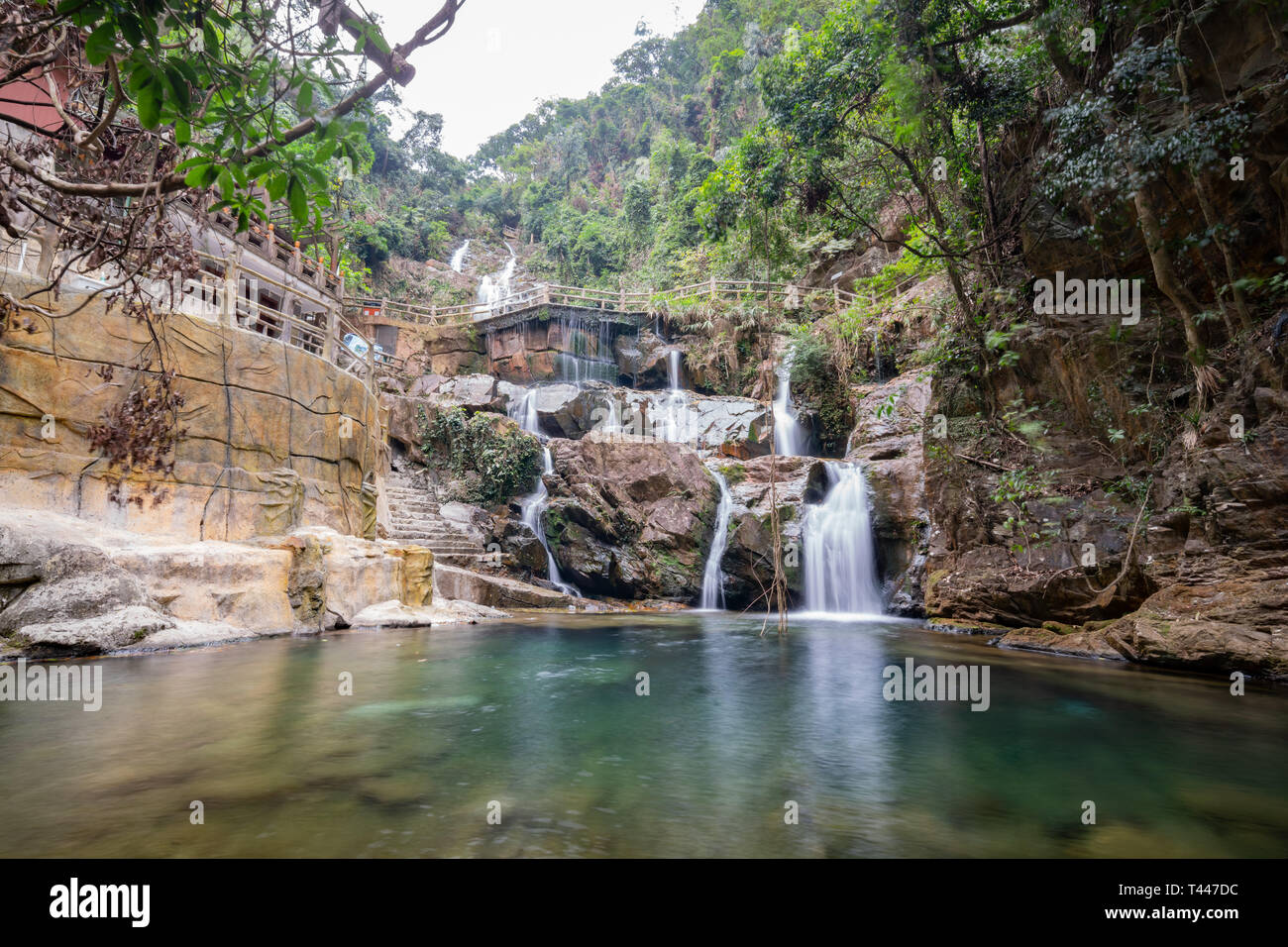
Dinghu Mountain.
Local Cuisine and Accommodation Nearby
When exploring the serene beauty of Dinghu Mountain, indulge your taste buds with delightful local cuisine and find comfort in nearby accommodations that cater to various preferences.
Culinary Delights
RongHua Restaurant
Located just a short distance from the entrance to Dinghu Mountain, RongHua Restaurant is a must-visit for those eager to savor authentic Cantonese dishes. The menu boasts a variety of local specialties, including succulent dim sum and aromatic seafood dishes, perfect for refueling after a day of hiking and exploration. The warm atmosphere and friendly staff add to the dining experience, making it a great spot to relax and enjoy a hearty meal.
Street Food Stalls
For a more casual experience, venture into the local street food scene. Just outside the park, you’ll find vendors offering tantalizing snacks like fried tofu, freshly made buns, and sweet treats. Sampling these local delicacies is an excellent way to immerse yourself in the culinary culture of the region.
Comfortable Stays
Dinghu Mountain Resort
For those looking to stay close to the action, the Dinghu Mountain Resort offers a range of accommodations that blend comfort and convenience. The resort features modern amenities, spacious rooms, and stunning views of the surrounding landscape. After a long day trekking the mountain trails, unwind at the resort’s facilities, including a restaurant and wellness center, ensuring a relaxing evening.
Nearby Guesthouses
If you prefer a more intimate setting, consider one of the charming guesthouses in the vicinity. These establishments often provide a homely atmosphere with personalized service. Many guesthouses serve local breakfasts, allowing you to start your day with a taste of the region before heading out to explore.
Conclusion
Whether you’re indulging in a delectable meal at RongHua Restaurant or resting at the Dinghu Mountain Resort, your experience near this natural wonder will be enhanced by the local flavors and comfortable accommodations. Embrace the tranquility and beauty of the area while enjoying its culinary offerings and hospitality.
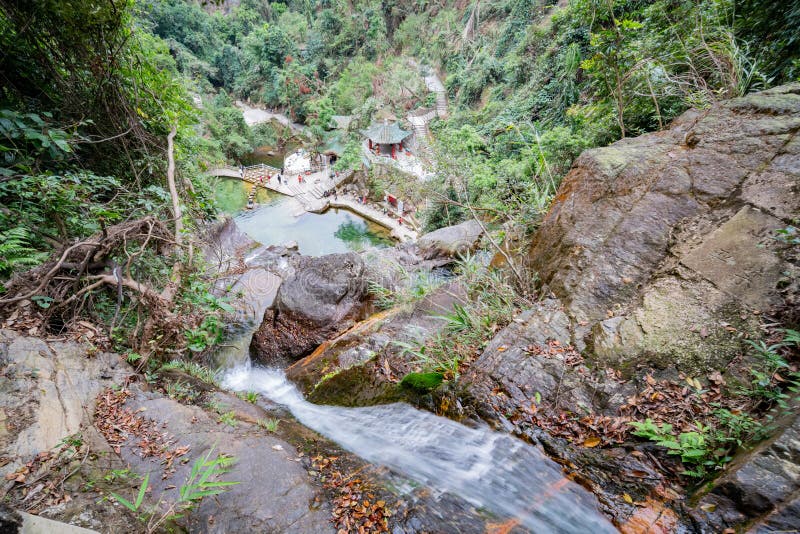
Dinghu Mountain.
Frequently Asked Questions
Frequently Asked Questions about Dinghu Mountain
-
What is the best time to visit Dinghu Mountain?
The ideal time to visit Dinghu Mountain is during the dry season, which typically spans from October to April. This period offers pleasant weather and less humidity, making it perfect for hiking and exploring the area. However, be prepared for potentially lower water levels in the waterfalls during this time. -
How do I get to Dinghu Mountain from the city center?
Dinghu Mountain is easily accessible by public transport. Buses from Zhaoqing city center take about an hour to reach the entrance of the park. It’s a convenient and budget-friendly option for travelers. -
Is there an entrance fee, and are there additional costs?
Yes, there is an entrance fee to access Dinghu Mountain. Additionally, if you choose to use the electric buggies available for rent (approximately RMB 20), it will incur an extra charge. Boat rides to Butterfly Island and other activities may also have separate fees. -
What should I wear when visiting Dinghu Mountain?
Comfortable, breathable clothing and sturdy walking shoes are recommended, as you’ll be exploring various trails and potentially steep areas. Don’t forget to check the weather forecast and dress accordingly. A light jacket may be helpful, especially in the mornings and evenings. -
Are there facilities available for dining or resting?
Yes, there are dining options within the park, but they might be limited. Many visitors recommend enjoying a quick snack, like bean curd, during their visit. If you plan to have a proper meal, consider allocating extra time to sit down and enjoy your food. -
How long should I plan to spend at Dinghu Mountain?
A half-day visit (approximately 4-5 hours) is usually sufficient for exploring the main sights, including the Butterfly Valley and various temples. However, if you wish to hike more extensively or spend time at the temples, you may want to plan for a full day. -
Are the hiking trails suitable for all fitness levels?
While Dinghu Mountain offers stunning views and natural beauty, some trails can be challenging, featuring steep and uneven steps. If you’re not physically fit, consider using the electric buggies to navigate the park more easily. -
Is Dinghu Mountain crowded during peak seasons?
Visitor numbers can vary, but many travelers report that the park is less crowded in the winter months, particularly in December. If you prefer a quieter experience, consider visiting during the off-peak times when you can enjoy the serene environment more fully.
Final Thoughts on Your Trip
As your adventure at Dinghu Mountain comes to a close, take a moment to reflect on the myriad experiences this breathtaking destination has to offer. From the serene beauty of Butterfly Valley to the tranquil temples nestled among lush greenery, every corner of Dinghu invites exploration and contemplation. Whether you chose to hike the winding trails or ride the convenient buggies, the natural splendor and cultural richness of this region are sure to leave a lasting impression.
Embrace the tranquility of the waterfalls, immerse yourself in the vibrant flora and fauna, and soak in the refreshing air that feels worlds away from the hustle and bustle of city life. Each visit is a unique opportunity to connect with nature and rejuvenate your spirit, making Dinghu Mountain a perfect escape for travelers seeking both adventure and serenity.
As you depart, carry with you the memories of beautiful landscapes and peaceful moments, and perhaps, a newfound appreciation for the wonders of China’s natural heritage. Until your next journey, may the essence of Dinghu Mountain inspire your future travels!